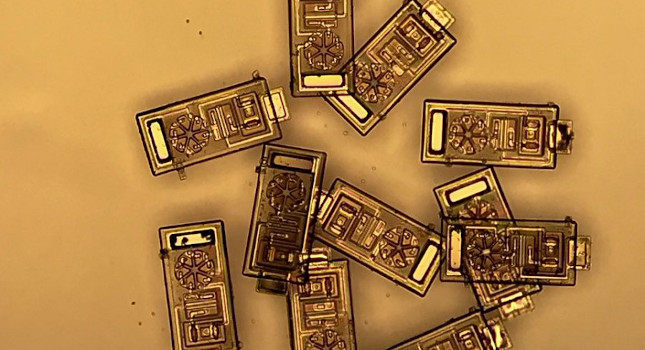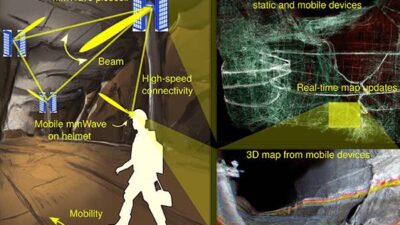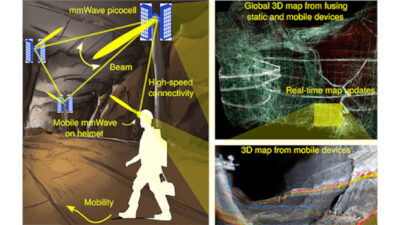Cornell researchers who build nanoscale electronics have developed microsensors that are equipped with an integrated circuit, solar cells and LEDs that enable them to harness light for power and communication.

Theologians once pondered how many angels could dance on the head of a pin. Not to be outdone, Cornell researchers who build nanoscale electronics have developed microsensors so tiny, they can fit 30,000 on one side of a penny.
There’s more to these tiny sensors than just their diminutive size: They are equipped with an integrated circuit, solar cells and light-emitting diodes (LEDs) that enable them to harness light for power and communication. And because they are mass fabricated, with up to 1 million sitting on an 8-in. wafer, each device costs a fraction of that same penny.
The collaboration is led by Paul McEuen, the John A. Newman Professor of Physical Science, and Alyosha Molnar, associate professor of electrical and computer engineering. Working with Alejandro Cortese, Ph.D. ’19, a Cornell Presidential Postdoctoral Fellow, they devised a platform for parallel production of their optical wireless integrated circuits (OWICs) – microsensors the size of 100 microns (a micron is one-millionth of a meter), mere specks to the human eye.
“In a certain sense, it’s an old idea, building tiny sensors like this,” said McEuen, who co-chairs the Nanoscale Science and Microsystems Engineering (NEXT Nano) Task Force, part of Cornell’s Radical Collaboration initiative. “But we pushed it another order of magnitude down in size and made it mass fabricate-able. A lot of times when people would make these little doodads, they would wire them all together by hand. You didn’t get a million at a time. So we constrained ourselves and said we’re not going to do it unless we can make them by the million.”
This image shows a voltage-sensing OWIC as it fits inside the Lincoln Memorial on the back of a penny, and a schematic of an OWIC’s components. Courtesy: Alejandro Cortese, Cornell University[/caption]
As a proof of concept, the team worked with the lab of Chris Xu, professor of applied and engineering physics and a co-author of the paper, and successfully embedded an OWIC with a temperature sensor in brain tissue and wirelessly relayed the results.
McEuen, Molnar and Cortese have launched their own company, OWiC Technologies, to commercialize the microsensors. A patent application has been filed through the Center for Technology Licensing. The first application is the creation of e-tags that can be attached to products to help identify them.
The tiny, low-cost OWICs could potentially spawn generations of microsensors that use less power while tracking more complicated phenomena.
“The circuits in this paper were quite simple,” Cortese said. “But you can potentially fit thousands of transistors on one of these devices. And that means you can increase the range of things the device can sense, how the device communicates out, or its ability to complete more complex tasks. We really developed this as a platform so that a lot of people have space to develop new devices, new applications.”
Cornell University
– Edited by Chris Vavra, associate editor, Control Engineering, CFE Media, [email protected].



